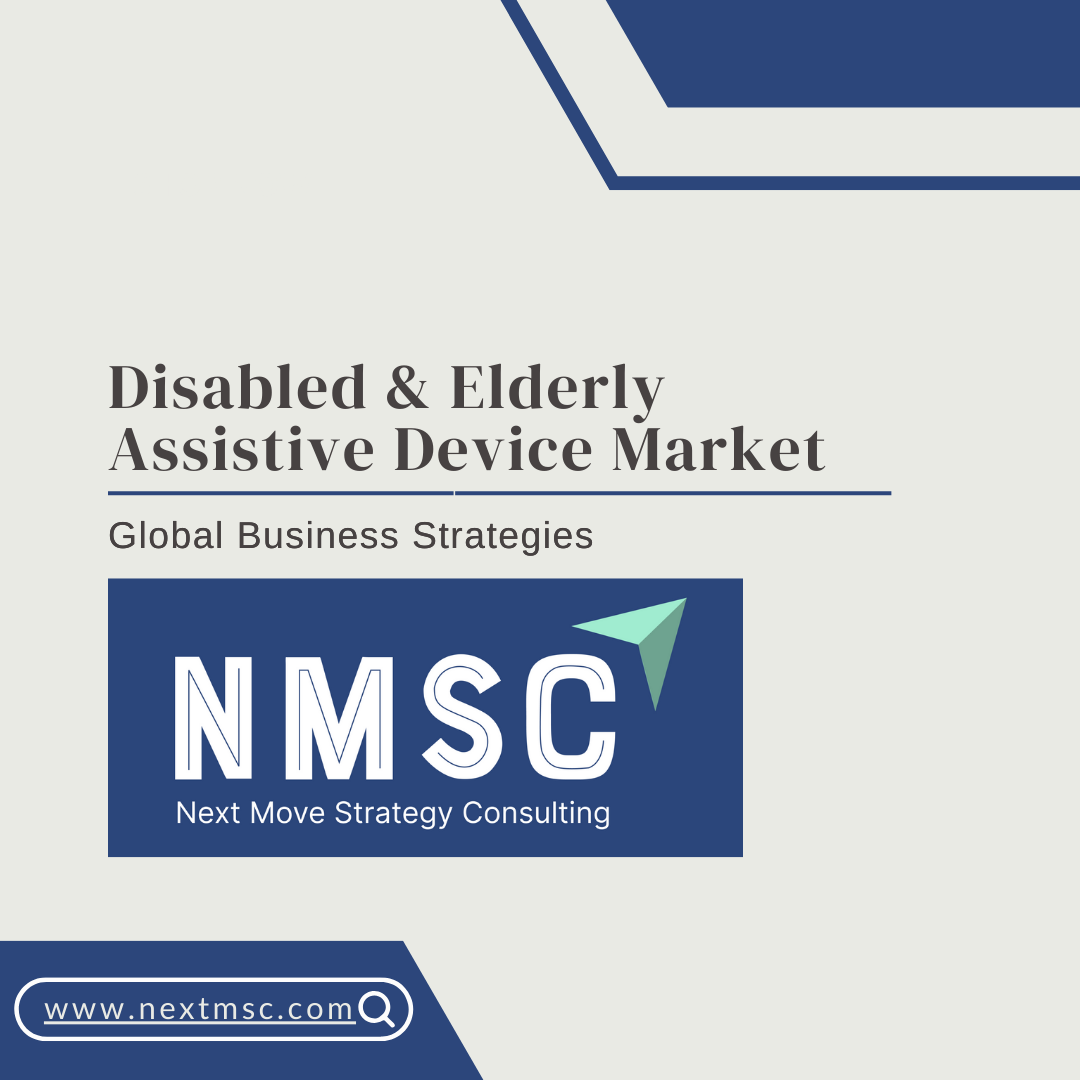Next Move Strategy Consulting
Disabled and Elderly Assistive Device Market Analysis 2030
Disabled and Elderly Assistive Device Market Analysis 2030
Couldn't load pickup availability
The Disabled & Elderly Assistive Device Market is predicted to reach USD 70.05 billion by 2030, registering a CAGR of 12.9%, driven largely by the aging global population and the rising need for devices that enhance mobility, vision, and overall independence.
Download FREE Sample: https://www.nextmsc.com/elderly-disabled-assistive-devices-market/request-sample
With life expectancy increasing and chronic age-related conditions becoming more common, there’s a strong demand for assistive technologies that help elderly individuals maintain their quality of life, whether it's mobility aids like wheelchairs and walkers, hearing aids, or vision correction devices.
One of the major driving factors is the need to support aging in place, where elderly individuals can remain in their own homes as they age, instead of moving to institutionalized care. Devices such as fall detection sensors, mobility aids, and hearing devices enable elderly people to live independently for longer periods, reducing the need for constant medical supervision or institutional care.
However, as you pointed out, cost remains a significant barrier. High-quality assistive devices can be quite expensive, making them less accessible for people in lower-income countries or those with fixed incomes.
Moreover, the lack of government funding or reimbursement programs in certain regions, combined with high import costs, further exacerbates accessibility issues. This is especially problematic in developing countries, where the need for such devices is growing but the infrastructure or financial support may not be adequate.
The European region is currently leading the market, which can be attributed to several factors like a larger elderly population, strong social care systems government subsidies, and support programs that make these devices more accessible.
In addition, Europe's commitment to innovation and advanced healthcare systems plays a big role in the adoption of newer assistive technologies. Countries with strong healthcare policies are more likely to invest in technologies that improve the quality of life for seniors, such as smart hearing aids, exoskeletons for mobility, and telehealth services for elderly care.
On the other hand, the high cost of these devices is a major challenge, and it could slow market penetration in developing regions. This creates opportunities for companies to innovate in cost-effective designs, materials, and financing options. For example, low-cost 3D-printed mobility aids or wearable health monitors might provide more affordable alternatives.
Some of the major players in the market, like Ottobock, Sonova, and Invacare, are pushing the envelope in terms of product innovation and market expansion, especially in areas such as hearing and mobility aids. These companies are not only developing better-performing devices but also engaging in partnerships with healthcare providers to ensure that elderly individuals get the care and assistance they need in accessing these devices.
Share

